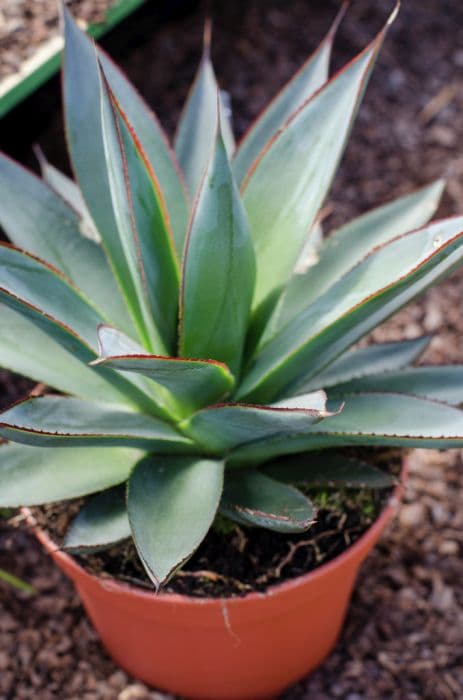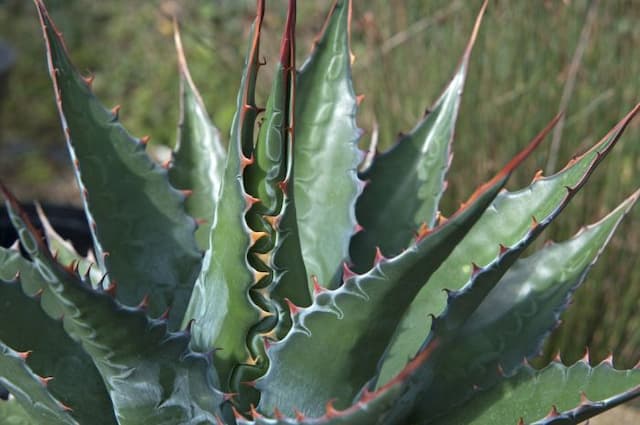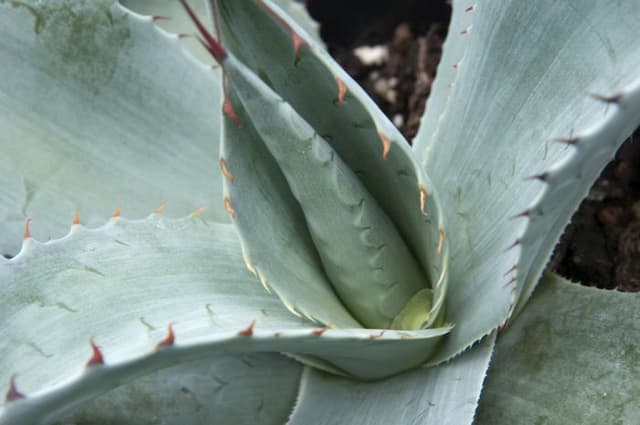Mountain cabbage tree Cordyline indivisa

ABOUT
C. indivisa is a slow-growing, evergreen erect tree reaching heights of 3m or more. The lance-shaped, blue-green leaves are relatively broad at 10-30cm wide and from 0.6-2m long with an orange-brown midrib. Small, white, star-shaped flowers borne in dense clusters in summer are followed by tiny purple-blue fruits
About this plant
 Names
NamesFamily
Asparagaceae.
Synonyms
Broad-Leaved Cabbage Tree, Mountain Cabbage Tree, Toi, Plume Cabbage Tree.
Common names
Dracaena indivisa, Terminalis indivisa, Convallaria indivisa, Asparagus indivisus, Cordyline hookeri, Dracaenopsis indivisa, Dracaenopsis hookeri.
 Characteristics
CharacteristicsLife cycle
Perennials
Foliage type
Evergreen
Color of leaves
Green
Height
8 feet (2.4 meters)
Spread
5 feet (1.5 meters)
Plant type
Shrub
Hardiness zones
8
Native area
New Zealand
Benefits
 General Benefits
General Benefits- Aesthetic Appeal: Adds a unique tropical look with its broad, green leaves that are attractive in landscaped gardens or as a houseplant.
- Low Maintenance: Requires minimal care once established, suitable for those with a busy lifestyle or new to gardening.
- Drought Tolerance: Once established, it can tolerate periods of dryness, reducing the need for frequent watering.
- Cold Resistance: More cold-tolerant than many other Cordyline species, which makes it suitable for cooler climates.
- Shade Tolerance: Can grow in light shade, which provides flexibility in landscaping design choices.
- Versatility: Can be grown both indoors and outdoors, in pots or in the ground, providing a range of uses for gardeners and decorators.
- Attracts Wildlife: Can attract birds that feed on the plant's berries, encouraging biodiversity in gardens.
 Medical Properties
Medical PropertiesThis plant is not used for medical purposes.
 Air-purifying Qualities
Air-purifying QualitiesThis plant is not specifically known for air purifying qualities.
 Other Uses
Other Uses- The long, fibrous leaves of the mountain cabbage tree can be used to create traditional baskets and mats through weaving.
- Due to its colorful foliage, the mountain cabbage tree may be utilized in floral arrangements and as a natural dye source.
- The sturdy trunk of the plant, once dried, can serve as a material for lightweight construction or crafting purposes.
- With its tropical appearance, the mountain cabbage tree is used in themed garden designs to create a dramatic visual impact.
- The leaves may be used in ceremonies or festivals as decorative elements that add a unique, exotic touch.
- In regions where it's native, the mountain cabbage tree can be planted to prevent soil erosion thanks to its robust root system.
- During festive seasons, the plant can act as a living Christmas tree alternative, especially in warmer climates.
- Creative hobbyists may use the dried leaves for scrapbooking or card making as natural embellishments.
- Photographers and filmmakers sometimes incorporate the mountain cabbage tree into their shoots as a striking and evocative prop.
- The plant can be used as an educational tool when teaching about different types of flora and biodiversity within its native range.
Interesting Facts
 Feng Shui
Feng ShuiThe Mountain Cabbage Tree is not used in Feng Shui practice.
 Zodiac Sign Compitability
Zodiac Sign CompitabilityThe Mountain Cabbage Tree is not used in astrology practice.
 Plant Symbolism
Plant Symbolism- Endurance: Cordyline indivisa, commonly known as Mountain Cabbage Tree, is known for its ability to endure cool climates and rough conditions, symbolizing strength and resilience.
- Protection: In some indigenous cultures, the Mountain Cabbage Tree is considered a guardian plant, believed to offer protection to its surroundings.
- Spirituality: With its long association with indigenous communities, the plant is often linked to spiritual narratives and practices, symbolizing a connection to the sacred.
- Prosperity: The Mountain Cabbage Tree's characteristic of being a hardy plant gives it a symbolic meaning of prosperity and the ability to thrive against odds.
 Water
WaterThe Mountain Cabbage Tree needs to be watered consistently but not excessively, roughly once a week or more frequently during hot, dry periods. When watering, thoroughly soak the soil until water runs out of the drainage holes at the bottom of its container, using about 1 to 2 gallons depending on the size of the plant and pot. It's important to allow the top inch of soil to dry out before watering again to prevent root rot. During the winter or in cooler temperatures, the watering frequency should be reduced to reflect the plant's slower growth rate.
 Light
LightThe Mountain Cabbage Tree prefers bright, indirect light and should be placed in a well-lit spot where it can receive this level of light for most of the day. Direct sunlight, especially during the harsh midday, may scorch its leaves, so a spot that receives morning light or filtered light is ideal.
 Temperature
TemperatureMountain Cabbage Trees thrive best in temperatures between 65°F and 75°F, which are typical room temperatures. It can tolerate a minimum temperature of around 50°F but should be protected from temperatures below this to avoid cold damage. Avoid placing it in drafts or near heat sources that could cause sudden temperature changes.
 Pruning
PruningPrune the Mountain Cabbage Tree mainly to remove any dead or damaged leaves to maintain its appearance and health. The best time to prune is in the spring before new growth begins. Pruning can be done annually or as needed when you notice unsightly or unhealthy leaves. Use clean, sharp shears to make clean cuts without tearing the plant's foliage.
 Cleaning
CleaningAs needed
 Soil
SoilMountain cabbage tree requires well-draining soil mix with organic matter. A blend of loam, perlite, and peat with some compost is ideal for healthy growth. The soil pH should be slightly acidic to neutral, around pH 6.0 to 7.0.
 Repotting
RepottingMountain cabbage tree should be repotted every 2-3 years or when the roots outgrow the pot. It's best to repot in spring or early summer before the growth season.
 Humidity & Misting
Humidity & MistingMountain cabbage tree thrives in moderate to high humidity levels, ideally around 40-60%. Avoid placing it in overly dry environments.
 Suitable locations
Suitable locationsIndoor
Provide bright, indirect light and avoid dry air for indoor growth.
Outdoor
Place in partial shade; shelter from strong winds outdoor.
Hardiness zone
9-11 USDA
 Life cycle
Life cycleThe life cycle of the Mountain Cabbage Tree (Cordyline indivisa) begins with seed germination, which occurs when environmental conditions are favorable, such as adequate warmth and moisture. Seedlings emerge and establish themselves, growing into juvenile plants with narrow leaves. As the plant matures, it develops broader leaves and a stout, unbranched trunk; during this vegetative growth phase, the plant invests in increasing both size and energy resources. Eventually, the Mountain Cabbage Tree reaches reproductive maturity, which may take several years, and produces inflorescences with small, white to pale blue flowers that are pollinated by insects. Following pollination, the plant develops berries containing seeds, which are dispersed by birds and other animals, starting a new cycle of germination. The Mountain Cabbage Tree is relatively slow-growing and can live for many years, going through several flowering and fruiting cycles during its lifetime.
 Propogation
PropogationPropogation time
Spring-Early Summer
The most popular method of propagating the Cordyline indivisa, commonly known as the Mountain Cabbage Tree, is through seed collection and sowing. The best time to collect seeds is when the berries turn a dark color, indicating they're ripe, which typically occurs in autumn. To propagate, start by removing the seeds from the berries and clean any attached flesh, as this can carry fungal spores that are harmful to seedlings. Once cleaned, the seeds can be sown immediately or stored in a cool, dry place. Sow the seeds in a well-draining seed raising mix, barely covering them. Keep the soil consistently moist and in a warm, bright environment, but out of direct sunlight. Germination can take one to three months, and the seeds should be transplanted once they've developed a set of true leaves.









